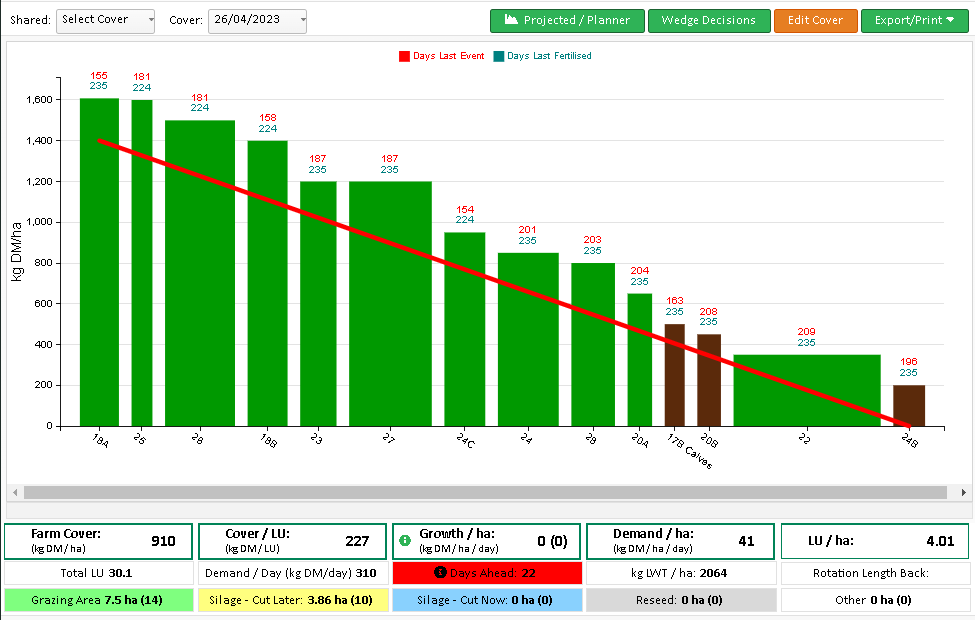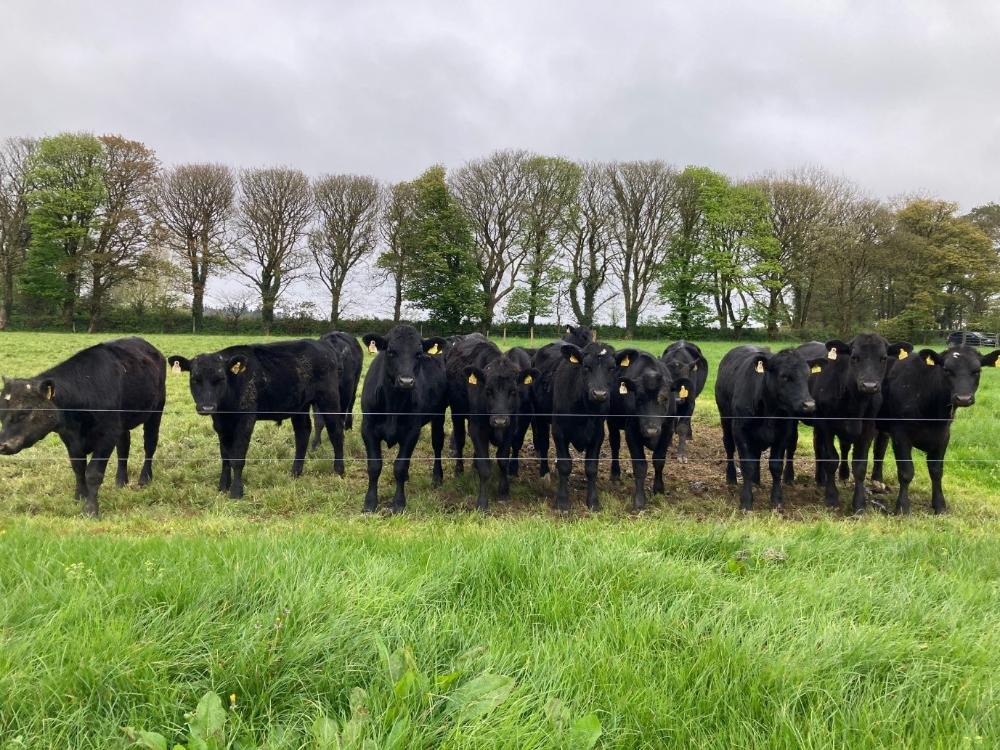Breeding
Ed started breeding on 21st October and finished on 22nd January (13.5 weeks). 22 cows and 1 heifer were bred in total. The herd were scanned and results showed that the 1 heifer and 20 cows are in calf. One cow was empty and a second cow was in calf but slipped the embryo so these will be culled.
14 of the females bred held to the first serve, indicating a conception rate of 61% to first serve (target 70%). No cows were scanned with twins and Ed expects to start calving around 3rd August and the last cow is due to calve on 9th November. He also plans to buy in 2 cows with calves at foot to join the herd in the autumn.
Grassland
Ed measured grass on the out farm on 26th April. The dairy beef yearlings started grazing there on 21st April, which was later than usual due to the wet weather and poor ground conditions. The out farm is located 25km away from the home farm so it is not readily accessible.
Pasturebase showed that the farm had an average farm cover of 1239 kg DM/ha. The demand from the 43 grazing yearlings was 27 kg DM/ha and there were 46 days ahead. Grazing targets for this month are a farm cover of 700 kg DM/ha with 12-14 days ahead.
Based on this information, Ed decided to take out 10 paddocks for silage. This gives him a farm cover of 910 kg DM/ha, a demand of 41 kg DM/ha and 22 days ahead. Re-growths on paddocks are slow due to the heavy covers, cold weather, low soil fertility and as there has been no fertiliser spread on the farm so Ed prefers to have extra days ahead and can take out more paddocks if necessary. Most importantly, he will be reducing the pre grazing yield to 1600 kg DM/ha to maintain good quality grass in front of the cattle.
While it is not ideal to make silage so far away from home, Ed is conscious that he may have to feed out silage at grass if a drought occurs over the summer. He is also reseeding silage ground on the home farm and had a longer winter feeding period than usual so is keen to take opportunities to make silage where possible. He will spread 30 units nitrogen/acre on the closed paddocks and aim to make good quality bales in mid-May. To help with re-growths on grazed paddocks, he will spread 1 bag of 27-2.5-5 per acre and a further bag of 0-7-30 to help soil index build up.

Performance
Ed has bought 47 calves since 23rd March. They have been vaccinated against mannheimia haemoltyica, Pi3, RSV (Rispoval) and IBR (live intranasal vaccine). They have also been given a preventative against coccidiosis. They are on ad lib ration, straw and various rates of milk replacer depending on how close they are to weaning.
The autumn 2022 born calves were weighed on 22nd April. The heifers (10) averaged 315kg and had gained 1.15kg/day since birth. The bulls (13) averaged 321kg and gained 1.23kg/day since birth.
The 2022 dairy beef yearlings were weighed on 19th March. They averaged 319 kg and gained 0.88kg/day from 1st January. The Friesian bullocks bought in autumn 2022 averaged 358kg.

